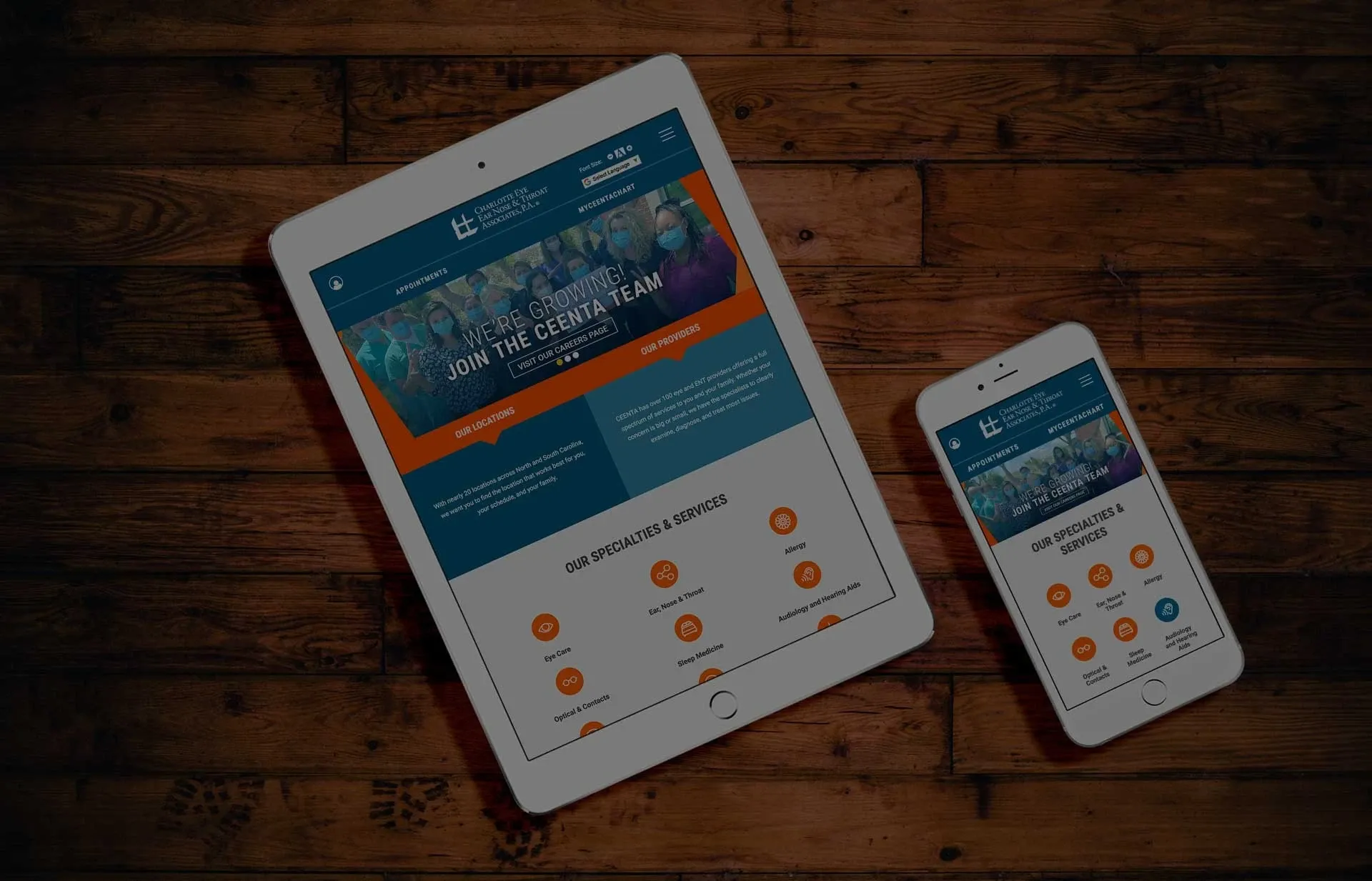The 2025 outlook for healthcare website design and development doesn’t differ much from the direction we’ve been moving for the past several years. It’s a cliche, but the “keep it simple” philosophy is still the standard. No matter how streamlined your web content might be, it could still be simpler.
As noted in our SEO outlook for 2025, Google (and other search engines) favor simple, streamlined content that is written for real patients (as opposed to search engines). This means if you still have long pillar-type content pages with tons of keyword-focused headings, you’re probably getting penalized by both the search algorithm and by real patients who don’t want to scroll through all that nonsense to find the information they’re looking for.
In all things design and UX related, you need to keep the end-user in mind. Write content and build web pages that are clean, simple, hyper-focused, and easy to navigate. Ensure you have a current understanding of data privacy and compliance requirements. And think about creating operational efficiencies through your website’s integration with apps, tools & utilities that help you run your practices.
Streamlined UX/UI Design
It may be boring, but it works… A healthcare website should be clean, simple and easy to navigate.
Intuitive Navigation
- Navigation is perhaps the most important aspect of your patient’s experience. Having the best content in the world means nothing if your visitors can’t easily find it. You should take a thoughtful approach to how users engage with your content and design navigation flows that support that engagement. We recommend keeping menus expanded wherever possible and minimizing the number of deeper-level clicks a patient has to make to drill down into deeper content. This means retaining sidebars on your core pages and utilizing large dropdowns or “mega menus” to show all links within each section of your website. You should keep similar content types grouped under common directories and cross-link individual resources or educational content where appropriate in your other pages.
Minimalist Aesthetics
- In modern healthcare web design, the actual design of your site should be all but invisible. Every page should be built around the specific content of that page, and the design shouldn’t distract from the UX or the messaging. It’s difficult sometimes to fight the urge to have a fancy design that sets you apart from your peers, but often-times deviating from the mold yields a poorer patient experience. In healthcare, you don’t need to fill your pages with sliders, scrollers, parallax backgrounds, etc. All of that is a disservice to your patient experience. We recommend leveraging simple, lightweight themes and templates wherever possible and simply customizing proven layouts with your branding in the most minimally-effective way.
Mobile Optimization
- This goes without saying, and it isn’t at all unique to 2025. The percentage of web traffic coming from mobile devices continues to grow year over year. Most healthcare practices see two-thirds (or more) of their overall traffic coming from phones and other mobile devices. As you consider your navigation strategy, content layout strategy, overall design & aesthetics and primary messaging, building it all for mobile first and then expanding it for desktop views is the best approach.
Focus on Accessibility, Security & Data Privacy
Oy vey. That whole Facebook/Meta pixel thing really opened up a can of worms on the healthcare industry over the past few years. The good news is, heading into 2025 a lot of the uncertainty around what you can track and how you can track it has cleared up.
HIPAA Compliance & Analytics
- We know that using Google Analytics without some kind of anonymizing software is a compliance issue. That issue has given rise to numerous products and services that allow you to continue to use GA in a compliant way or replace it entirely with a compliant analytics solution. There’s no one right fit for every practice with this. It depends on what data you routinely analyze to make impactful decisions in your marketing, administration or operations. Many practices have chosen to simply forego GA entirely in favor of using off-page analytics tools. Others have worked the cost into their budget for anonymizers or replacers. Regardless of what direction your practice decides to go, you need a thoughtful and well-informed compliance strategy ahead of your data tracking.
Security & Website Platform Management
- This also isn’t new to 2025, but the nuance has changed somewhat. With healthcare data privacy and HIPAA becoming better understood by the average web host, many software providers or agencies that previously dabbled in healthcare have moved away from it. At E-dreamz, we built our Remedy CMS platform years ago as a direct response to the security concerns with platforms like WordPress. But we see many major healthcare groups still running on a CMS or in a hosting environment that is completely ill-suited to their security and compliance requirements. If you’re still running your practice’s website on open-source software or in a commonplace shared-hosting environment, we’d strongly encourage you to run some audits to ensure you don’t have any compliance issues with your setup.
Operational Efficiency, Integrations & Apps
- Most practices have developed effective digital toolkits that bring together their practice management software, payment management, appointment scheduling, patient portals, form submissions, telemedicine solutions and other healthcare-focused apps. But, not many practices integrate or organize their toolkits in a well-optimized fashion. Using your website to assemble your patient-focused utilities and build patient journeys and workflows that help guide patients to self-service for common steps in the process yields tremendous gains in operational efficiency for your practice. At E-dreamz, we have extensive experience helping practices build exactly these kinds of digital roadmaps for their patients. If you currently don’t have a complete toolkit, or if you aren’t sure how to put all the pieces together, schedule time with one of our solutions engineers to work through some ideas and recommendations for better operational efficiency.
To summarize, your web design & UX strategy for 2025 should be primarily on simplification, streamlining and enhancing the overall patient-experience. But in so doing, keep a mind on security, compliance and creating process improvements wherever possible.
And to learn how a focus on streamlining and simplification can be applied to your content strategy as well, check out our 2025 SEO guide here.
« Back to Blog
Ready to Get Started? Contact Us Today to Schedule Your Discovery.

© 2025. All rights reserved. E-dreamz, Inc.

